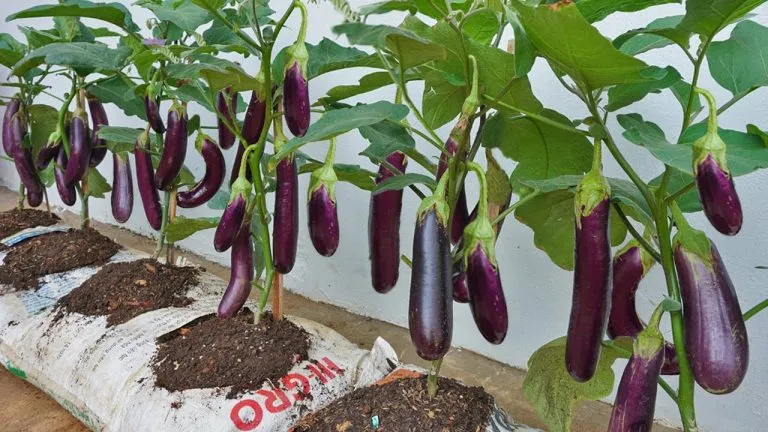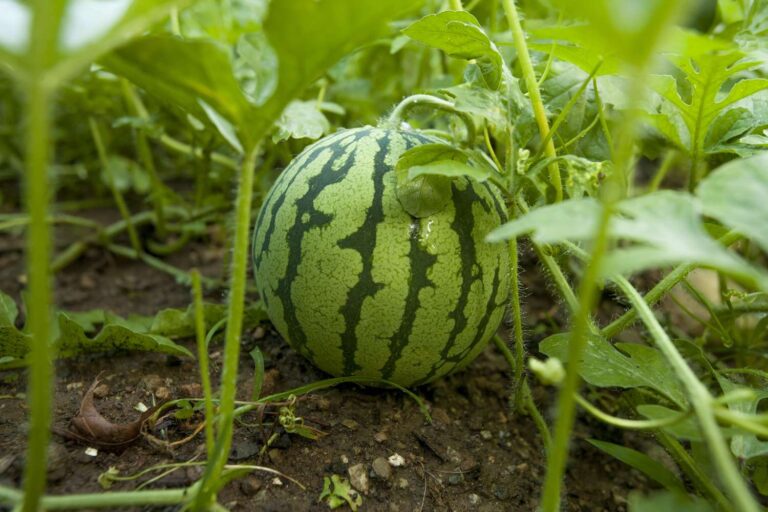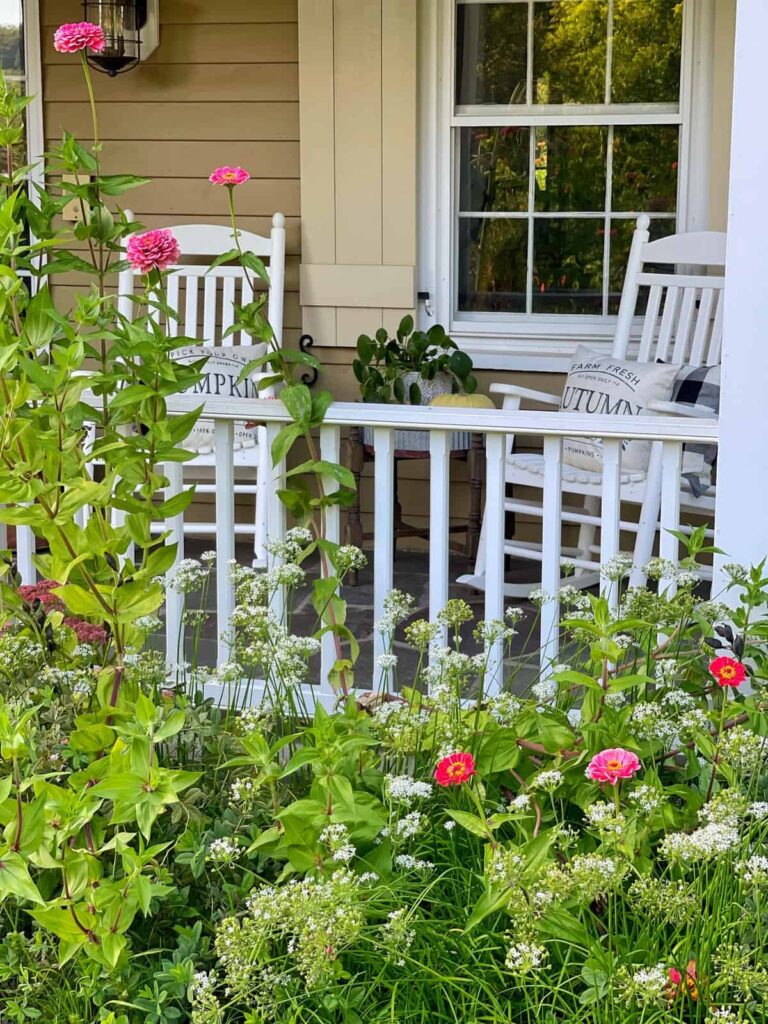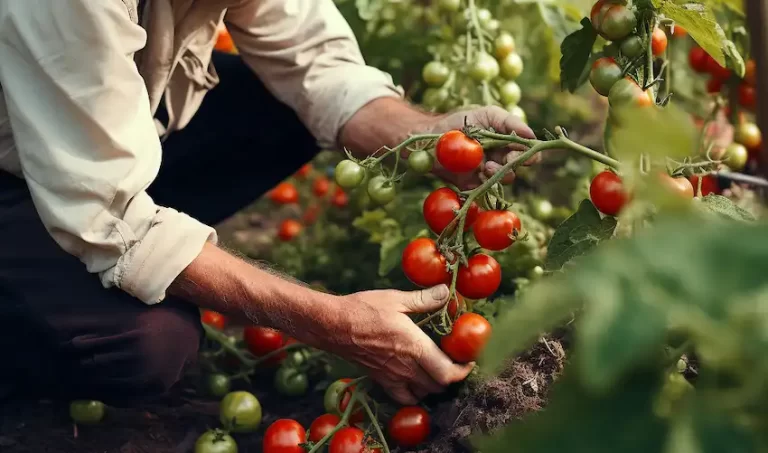Essential Tips for Growing Perfect Eggplants in Your Garden
Eggplant often divides opinions – it’s a love-it or loathe-it affair. Yet, this often-overlooked vegetable seldom finds its roots in backyard gardens, despite the aficionados who relish its velvety texture when cooked to perfection.
Their notorious nature of being somewhat temperamental might deter many. But dive a little deeper into understanding their requirements, and you’ll discover that these exquisite plants aren’t as demanding as they might seem.
Whether nestled in garden beds or thriving in pots, eggplants add a touch of gourmet to your annual home harvest.
Originally hailing from Asia, eggplants belong to the nightshade clan, sharing the lineage with tomatoes and peppers. Surprisingly, these are fruits! Around the globe, they answer to names like “aubergine” or “brinjal.”
For those who’ve tasted their charm, these delights are often an annual garden staple. If you haven’t yet, this might be the year to introduce them to your gardening repertoire.
These leafy wonders crave space under the sun. While they primarily stretch out in gardens, some compact varieties are container-friendly.
Fond of warmth, eggplants thrive in prolonged sun-drenched climes. Yet, shorter summer spans aren’t a deal-breaker. Some swift growers, such as the slender Japanese variant, promise a bountiful yield even then.
Seeding the Beginning
For those seeking something beyond the ubiquitous Black Beauty – the default nursery choice – seeds are the way to go.
Their rising appeal means that nowadays, nurseries often stock exotic varieties like Japanese or even the pristine whites. For the adventurous gardener, numerous heirloom and hybrid seeds await, beckoning with the promise of novelty.

Kickstart your eggplant journey by sowing seeds roughly 8 to 10 weeks ahead of your intended outdoor transplant date.

Plant one seed in each pot, about a quarter-inch deep. Ensure they bask in warmth and light, craving a daily dose of 6-8 hours of sunlight. Lacking natural brightness? A grow light can work wonders.
A protective dome over the pots retains warmth and humidity until the seedlings reach about 2 inches in height. Don’t forget to offer these youngsters some support early on with stakes.
The Right Time to Shift
The great outdoors beckons the eggplant seedlings only once frost’s chill is a distant memory and the earth has embraced warmth. Familiarize yourself with your region’s frost timelines to ensure smooth transplantation.
An early start to the season? Lay a sheet of black landscape fabric over your garden soil, anchoring its edges. This technique accelerates soil warming. But, remember, delayed planting could be a natural pest deterrent.
But before they make their outdoor debut, the young plants demand a period of acclimatization or “hardening off.”
Gradually introduce them to the external environment. Start by placing them in a shaded, cooler spot inside your house. Then, subject them to a few outdoor hours daily, extending the duration incrementally. Throughout this phase, ensure the soil remains moist, guarding against desiccation.
Nutrients & Soil Composition
For eggplants to truly thrive, they prefer a soil that’s either neutral or tilts slightly towards the acidic side, with pH levels hovering between 5.5 and 7.
As seedlings, it’s crucial to nourish them with nitrogen-rich nutrients. A universal fertilizer usually does the trick. But, here’s a pro-tip: once they begin blossoming, tone down the nitrogen. Opt instead for a blend that’s tailored for vegetables. If not, you might be left with lush greenery but no fruit in sight.
Eggplants have a particular fondness for magnesium. A homespun remedy? Dissolve a tablespoon of Epsom salt in a gallon of water and let your plants drink up. Administer this concoction monthly. (It’s a charm for tomatoes and peppers as well!)
Sunshine & Personal Space
Eggplants are akin to sunbathers – they adore their sunlight. Plant them in spots that aren’t overshadowed by taller neighbors and maintain a gap of at least 18” from other greens.

Although they’re sociable with fellow nightshades like peppers and tomatoes, ensure they stand in the limelight, not in the shadows.
A sprinkle of organic mulch around their base assists in soil moisture retention. To have a flourishing eggplant, allocate a sunny spot just for it.
The Pot Life
Lack garden space? Or simply a container gardening enthusiast? Eggplants have you covered. Varieties such as Japanese or Asian eggplants adjust well to the pot life, combining quick growth and resistance to most diseases. These varieties, with their thinner skin and tender fruit, are culinary delights in dishes like stir-fries.
From my gardening escapades, I’ve found Fairytale, Bambino, and white eggplants to be container-friendly too. For this venture, choose spacious containers; think at least 5 gallons. And for soil, a balanced trio of potting mix, sand, and compost proves ideal. Just ensure the container facilitates drainage.
Don’t forget the cage! Especially for potted eggplants. The structure aids them as they grow, preventing snapped branches. And yes, regular fertilization and abundant water, sometimes multiple times a day, are non-negotiable for potted plants.
Be the Matchmaker
The dwindling bee population might impede natural pollination. Enter hand-pollination. Gently dust the stamen using a soft brush. Alternatively, an old battery-operated toothbrush can mimic pollination vibrations, promoting pollen transfer.
Optimal Growth
For a bountiful fruit yield, some strategic pruning can work wonders. Once the inaugural flower appears, you can start. The plant typically branches off at this stage; trim any growth below this point to focus the plant’s energy upwards.
Throughout the season, regularly prune any emerging suckers or yellowing leaves. This directs the plant’s vitality towards fruiting.
Challenges on the Horizon
Regular watering is crucial; otherwise, your eggplants may exhibit yellowed leaves and sparse fruits. Especially for container-bound plants, frequent hydration is paramount.

In the insect world, flea beetles are eggplant adversaries. They munch through leaves, especially threatening to young seedlings.

To combat this, tilling your garden post-season and using landscape cloth can curb larvae development. Additionally, planting radishes nearby can divert these pests.
Lace bugs also pose a threat. Removal of affected leaves often discards the eggs they harbor.
Harvest Time
Typically, 65-80 days post-transplantation marks harvest time. But remember, size matters! Oversized eggplants tend to be bitter. Aim to pluck them when they’re around 4-6” long. And for the best taste, cook them shortly after picking.

If nurtured properly, your eggplants will bear fruits until the first frost touches the ground.
Nurturing eggplants might seem intricate, but the fresh, garden-picked flavors are unparalleled. They’re truly worth the effort!







